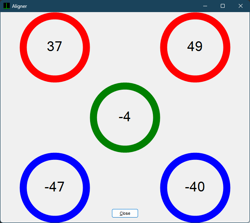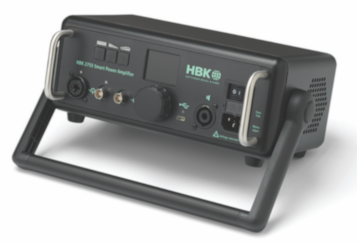
ZIRCON 1.0 is a software tool for the in-situ measurement of the acoustic properties of sounds barriers in accordance with the EN 1793 and EN 16272 standards.

ZIRCON 1.0 is a software tool for the in-situ measurement of the acoustic properties of sounds barriers in accordance with the EN 1793 and EN 16272 standards.

DIRAC 7.3, together with the new MA25 microphone array simplify and speed up diffraction measurements following the EN 1793-4 and EN 16272-4 standards.
The MA25 array complements the Zircon V2 hardware, and connects to the same CI24 control unit used for reflection and transmission measurements with the MA24 array.
DIRAC 7.2 integrates the EN 1793-5/6 and EN 16272-5/6 parameter calculations that in previous versions were performed using a spreadsheet. This greatly reduces the time needed to arrive at the final results.

One of the most time-consuming aspects of noise barrier measurements for EN 1793-5/6 and EN 16272-5/6 is the correct positioning of the microphone array in relation to the barrier and the sound source. New hardware ans software options are available to make this task easier and more accurate.

The HBK 2755 Smart Power Amplifier is suitable for stand-alone use, but DIRAC users can also take advantage of this amplifier in various ways
Dirac 7.1 is a significant update for Dirac 7, that contains some important new functionality as well as
numerous other improvements and bug fixes.
The 3 main features of this update are the STIPA measurements using a modulated noise signal,
support for B&K LAN-XI data acquisition modules, and the automatic sample rate conversion.

The long awaited DIRAC 7 is now available. It is a major upgrade of the DIRAC software, with many new features and improvements. The most important new features are:
A commonly used DIRAC front end is the Brüel & Kjær Type 2250 (or 2270) sound level meter (SLM) connected to a B&K Type ZE-0948 sound device. In this way the sound pressure level (SPL) can be obtained both by reading out the SLM display and from its analog output signal after analysis by DIRAC. Under certain conditions, the DIRAC results may exceed the values displayed on the SLM.

The RME Fireface UC has all the features of a high quality audio device that is well suited for measurements with DIRAC. More...
In the previous article on sound source equalization,
it was noted that the use of an anechoic room is required for accurate results.
Although that statement is true as a general principle,
it may not hold for every individual measurement setup.
As shown by Alastair Gurtner, in a follow up to his earlier work,
using carefully created outdoor free-field measurements may give better results than
those from a sub-optimal anechoic room.
More...

Some applications - notably speech intelligibility measurements -
demand that a sound source emit a signal with a precisely defined spectrum.
Dirac 6 contains the necessary tools required to equalize a sound source and to generate such signals.
However, having the tools is not enough. Knowing how to use them is equally important.
Here you will find an overview of the signal shaping procedure,
and a fully worked out use case provided by Mr. Alastair Gurtner.
More...
Before the publication of the ISO 3383-3 standard for measurements in open plan offices, the system calibration was only used for the measurement of the Strength (G) parameter, and related parameters such as the early and late strength (G80 and GL), and the lateral sound levels (GEL and LG). Since the introduction of ISO 3382-3, the use of system calibrations has increased significantly.
Performing an accurate system calibration can be a challenging task.
For the best results, an anechoic room or reverberation chamber is required,
and even there it is difficult to get results with an error margin close to 1 dB.
Not everyone has easy access to an anechoic room or a reverberation chamber,
and therefore the in-situ free-field system calibration method is often used.
The following are three important concerns with this type of calibration.
More...

The EN 1793-5 standard describes a procedure to measure the reflection properties of road traffic noise reducing devices in situ. The 2003 version of the standard has been supported by Dirac and the Zircon probe since its publication. A new version has been released, and we have updated Dirac to provide limited support for EN 1793-5:2016.
Compared to the 2003 version of the standard, numerous changes have been introduced, the most prominent of which are the use of a 9-microphone array and modified calculations. More...
Emergency evacuation and voice alarm systems sometimes use high-frequency pilot tones to continuously monitor the connections between the individual elements. Failure of any speaker to produce the pilot tone can thus be detected very quickly and an appropriate error message can then be generated. These pilot tones have a frequency beyond the range of human hearing at around 20 kHz. An example of such a system is the Bosch Praesideo. In rare cases, the pilot tones have been found to interfere with acoustic measurements. More...

In March 2015 a group of students from the Eindhoven University of Technology organized a research expedition to three ancient Greek outdoor theaters to investigate the acoustical properties and the exceptional claims made about them.
The data for approximately 12000 impulse responses were collected, and are still being analyzed. How did the team succeed in performing this many measurements over the course of just three days? More...
A draft version of ISO 3382-3 from 2009 contained the following paragraph:
NOTE Alternatively, for the STI measurements a directional source may be used. In accordance with IEC 60268-16 it should have directivity characteristics similar to those of the human head/mouth. The sound power spectrum should be as specified in Table 1. The main axis of the source should be pointed in the direction of the microphone.
In the final version this paragraph was removed, and the use of an omnidirectional source was mandated, but the sound power spectrum for a directional source remained in Table 1. More...

In traditional MLS measurements a PC generates the MLS stimulus and at the same time samples the room response. In many cases however it is impractical to have a wired connection between the PC and source or the PC and the microphone. If we decouple the MLS generator from the response sampler, the clock frequency used to emit the stimulus may differ from the clock frequency used to sample the response, by a very small amount. We call this an asynchronous measurement. Sometimes it is also called an open-loop measurement. What actually happens in an asynchronous measurement, and how does it differ from a synchronous measurement? More...